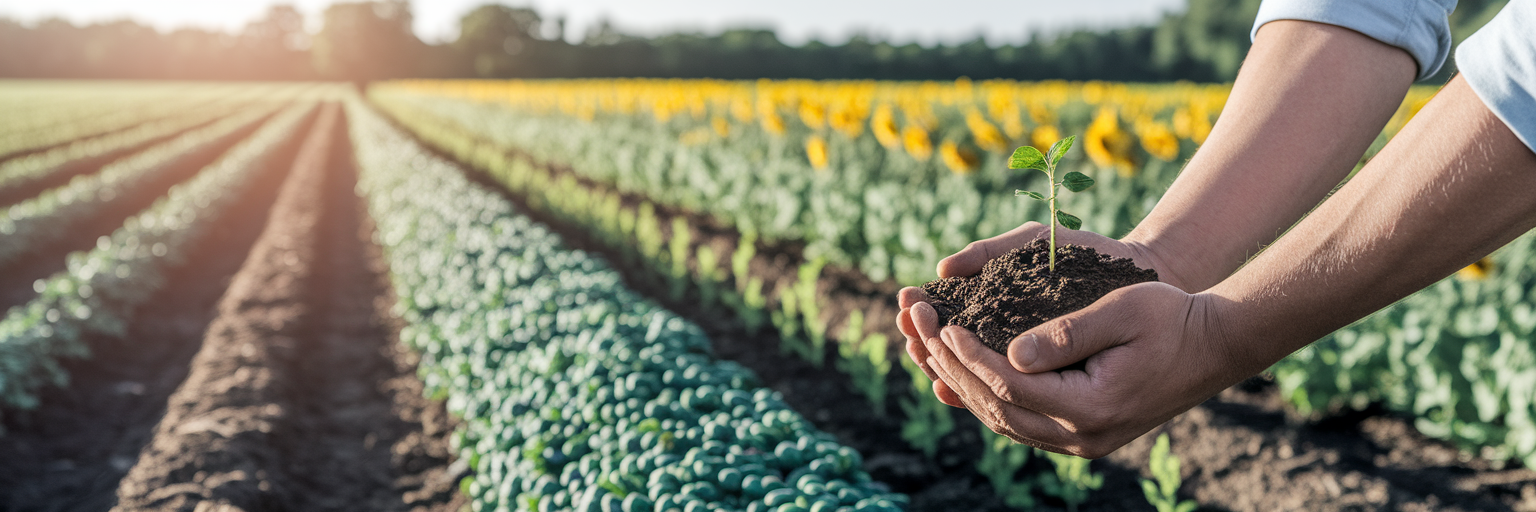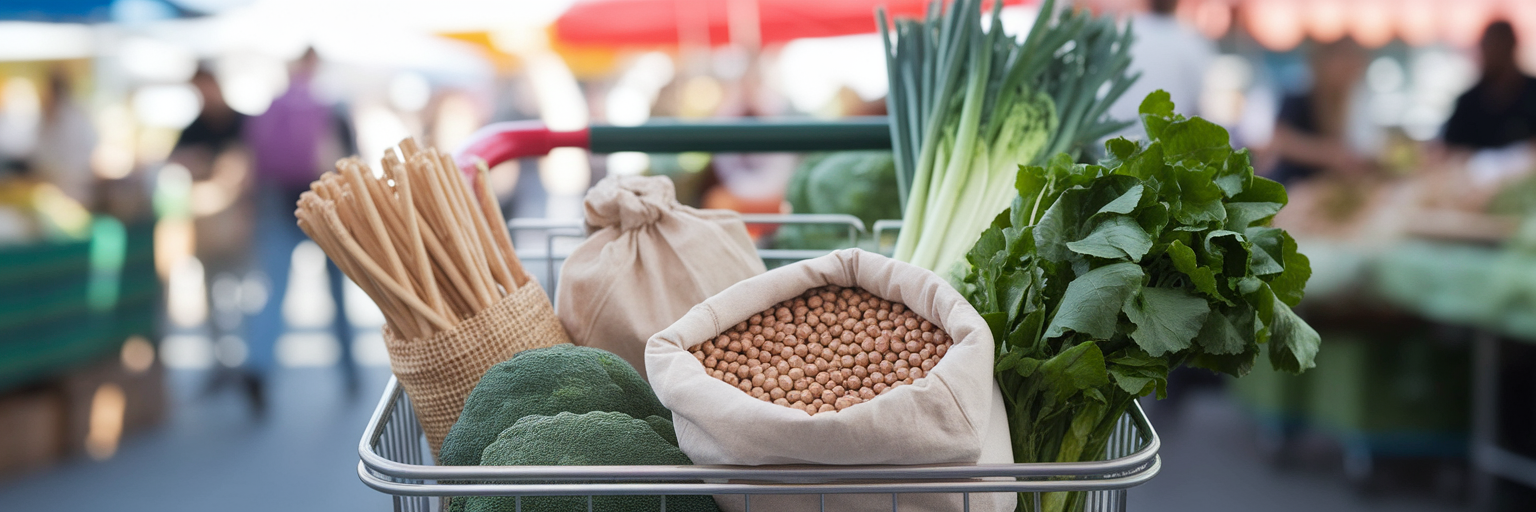Why Your Protein Choice Matters More Than Ever
Many of us feel a growing desire to make choices that are better for the planet. It shows up in small ways, like carrying a reusable coffee cup or choosing the bike over the car. This guide is for anyone who wants to extend that positive impact to their plate, without getting lost in confusing rules. We're here to help you feel confident and genuinely good about the food you eat.
Switching to plant-based protein is a fantastic first step for reducing your environmental footprint. But here’s a truth that often gets overlooked: not all vegan proteins are created equal. The journey from a seed in the ground to the protein on your plate involves farming methods, processing, and transportation. Each of these steps carries its own environmental weight.
Thinking about how to eat sustainably means looking just a little closer at these details. This article will help you understand the differences, so you can navigate the grocery store with clarity. It’s about making informed choices that align with your values, one delicious meal at a time.
The Environmental Gap Between Plant and Animal Protein
To understand the impact of our food choices, it helps to see the numbers. The difference between animal and plant protein footprints is not small, it's massive. According to a report by the UN's Food and Agriculture Organization, livestock farming is a major contributor to greenhouse gas emissions. For example, producing just one kilogram of beef can generate around 27 kilograms of CO2 equivalent. In contrast, most plant proteins emit less than two kilograms.
Why such a huge gap? Animal agriculture is incredibly resource intensive. It requires vast amounts of land for grazing and to grow feed crops like corn and soy. It also consumes enormous quantities of water and releases significant methane, a potent greenhouse gas. An eco friendly plant based diet sidesteps much of this inefficiency.
Plants are simply more direct. Growing lentils, chickpeas, or peas requires far less land and water to produce the same amount of protein. These low carbon footprint foods are a powerful tool for climate action. The table below paints a clear picture of this difference. Choosing plant-based is the first big win for the planet, and the rest of this guide will help you refine those choices even further.
| Protein Source | CO2 Emissions (kg per kg of protein) | Land Use (sq. meters per 100g of protein) | Water Use (liters per 100g of protein) |
|---|---|---|---|
| Beef | ~27 kg | 163.6 m² | 1,550 L |
| Chicken | ~6.9 kg | 7.1 m² | 433 L |
| Tofu (from Soy) | ~2.0 kg | 2.2 m² | 180 L |
| Lentils | ~0.9 kg | 7.6 m² | 587 L |
Note: Data is aggregated from sources including the UN's Food and Agriculture Organization (FAO) and Our World in Data. Figures are estimates and can vary based on specific farming practices and regions.
What Sustainable Sourcing Actually Looks Like

The term "sustainable sourcing" can feel a bit vague, but it boils down to farming and production methods that are kind to the earth, its resources, and its people. It’s about looking beyond just the final product and considering its entire journey. This means understanding a few key concepts that are shaping the future of food.
Beyond 'Local': The Rise of Regenerative Farming
For years, "local" was the primary benchmark for sustainable eating. While it's still important, a new approach is gaining ground: regenerative agriculture. This method goes beyond simply sustaining the land. It actively works to improve it. The regenerative agriculture benefits are profound, as these farming practices help restore soil health, increase biodiversity, and can even pull carbon out of the atmosphere and store it in the ground. It’s about giving back more than we take.
Decoding Labels: Your Guide to Certifications
When you're standing in the grocery aisle, how can you spot these better practices? Certifications are your friend. Labels like USDA Organic indicate that a food was grown without synthetic pesticides and fertilizers, which is better for soil and water quality. The Fair Trade seal ensures that farmers and workers received fair wages and work in safe conditions. Think of these labels as helpful signposts guiding you toward more responsible choices.
The Nuance of Food Miles
The distance your food travels, or its "food miles," definitely matters. However, it's not the only factor. Sometimes, a product grown with regenerative methods from farther away can have a lower overall environmental footprint than a conventionally farmed local item. The key is to balance these factors. Exploring these topics is key to a truly sustainable lifestyle, and you can find more insights on everything from ingredients to recipes on our blog.
The Soy Dilemma and the Power of Protein Diversity
Let's talk about soy. It’s a versatile and popular protein, but it often comes with questions. You’ve probably heard concerns about the environmental impact of soy and its connection to deforestation, particularly in the Amazon. This is a valid concern, and it’s important to get the facts straight.
Here’s the context that often gets missed: the vast majority of soy grown in those deforested areas, over 75%, is used for animal feed, not for human food like tofu, tempeh, or soy milk. When you choose soy for your own plate, you are not the primary driver of that problem. Opting for organic soy grown in the U.S. or Canada is a great sustainable choice, as these regions have strong environmental regulations.
This conversation highlights a bigger point: the importance of protein diversity. Relying on just one or two sources isn't as resilient or beneficial as embracing a variety. There are many incredible sustainable vegan protein sources to explore:
- Lentils, Chickpeas, and Black Beans: These pulses are part of a group of plants that are "nitrogen-fixing," meaning they naturally enrich the soil, reducing the need for fertilizers.
- Hemp Seeds: A nutritional powerhouse that grows quickly, requires no pesticides, and helps suppress weeds naturally.
- Pea Protein: This has become a star for a reason. Peas are another nitrogen-fixing crop with a very low water footprint. Pea protein is not only eco-friendly but also packs a punch, which is why it's the star ingredient in convenient options like our Chocolate Vegan Protein.
Your Eco-Friendly Grocery Shopping Guide

Knowledge is empowering, and now it's time to put it into practice. Making sustainable choices at the grocery store doesn't have to be complicated. With a few simple guidelines, you can fill your cart with foods that are good for you and the planet. Here is a simple checklist to keep in mind on your next shopping trip.
- Choose Whole Foods First: Whenever possible, opt for proteins in their least processed form. Think dried beans, whole lentils, and raw nuts and seeds. These options almost always have a smaller processing and packaging footprint.
- Look for Key Certifications: Keep an eye out for those helpful labels we talked about. The USDA Organic and Fair Trade seals are your shortcuts to identifying products that meet higher environmental and ethical standards.
- Buy in Bulk and Reduce Packaging: The bulk section is your best friend for minimizing plastic waste. Bring your own reusable bags or jars to stock up on grains, legumes, nuts, and seeds. Every piece of plastic you avoid makes a difference.
- Read the Origin Label: Take a quick glance to see where your food comes from. Choosing products grown in the USA or North America helps reduce food miles and supports regional food systems.
Once you start looking, you'll find amazing options everywhere. You can explore our full collection of thoughtfully sourced products to get inspired.
The Exciting Future of Sustainable Protein
While choices like lentils and peas are fantastic, the world of sustainable protein is constantly growing. The future is full of exciting innovations that promise to feed a growing population while putting even less strain on our planet. Your choices today are helping to fuel demand for these incredible alternatives.
Keep an eye out for emerging proteins like mycoprotein, which is derived from fungi and can be grown in fermenters with a tiny fraction of the land and water needed for traditional agriculture. Another is spirulina, a type of algae that is rich in protein and can be cultivated in water systems, leaving valuable land free for rewilding or other uses.
These food tech developments aren't science fiction; they represent the next frontier in our food system. Every time you choose a sustainable plant-based option, you send a message that you want a healthier, more resilient food future. Feeling inspired to get cooking? Try one of these 3 Easy Vegan Protein Recipes You'll Actually Crave to put your sustainable choices on the plate tonight. And if you found this guide helpful, please share it with an eco-conscious friend!



